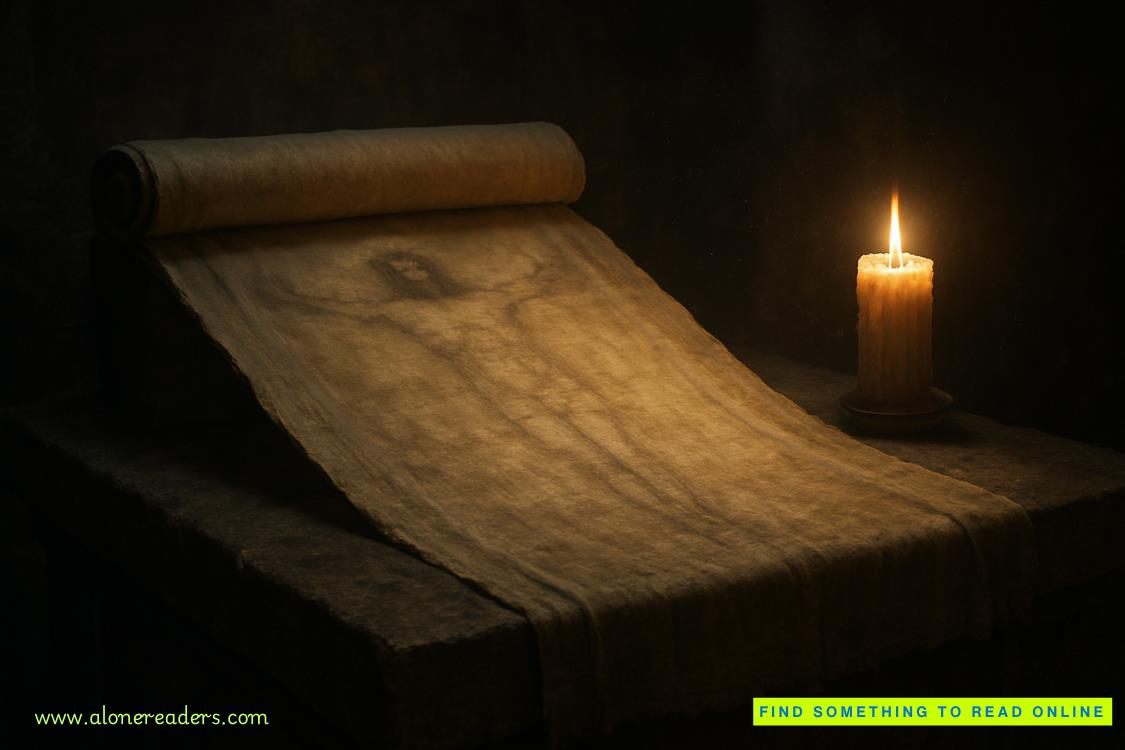Page 20 of The Plains of Passage (Earth's Children 4)
Wolf was full of high spirits and had been darting under and around the legs of the horses, particularly Racer. Whinney seemed able to ignore his exuberance, but the stallion was more excitable. Ayla thought the young horse would have responded to Wolf's playfulness in kind if he had been allowed to, but with Jondalar guiding his movement, the wolf's antics only distracted him. The man was not pleased, since it required him to keep a closer control over the horse. His irritation was building up, and he was considering whether he should ask Ayla if she couldn't keep the wolf away from Racer.
Suddenly, much to Jondalar's relief, Wolf dashed away. He had caught the scent of the deer and gone to investigate. The first sight of the long legs of a giant deer was ir
resistible; Wolf decided it was another tall, four-legged animal for him to play with. But when the stag he approached lowered his head to fend off the charging animal, Wolf halted. The magnificent spreading antlers of the powerful deer were each twelve feet long! The great beast nibbled on the broad-leaf grass at his feet, not unmindful of the carnivore, but indifferent to him, as though he knew he had little to fear from a lone wolf.
Ayla, watching, smiled. "Look at him, Jondalar. Wolf thought that megaceros was another horse he could pester."
Jondalar smiled, too. "He does look surprised. Those antlers are a little more than he expected."
They rode slowly toward the water, understanding without saying so that neither of them wanted to startle the massive deer. They both felt a sense of awe as they neared the enormous creatures that towered over them, even on horseback. With a stately gracefulness, the herd edged away as the people and horses approached, not frightened, but cautious, browsing on the woolly willow leaves as they went.
"They are a little more than I expected, too," Ayla said. "I've never been this close before."
Though only slightly larger than moose in actual physical size, the giant deer, with their magnificent, elaborate antlers, spreading out and up from the tops of their heads, seemed enormous. Each year the fantastic horns were shed and the new pair that grew in to replace them extended to greater lengths and more complexity, eventually reaching twelve feet or more on some old males in a single season. But even when their heads were bare, that greatest member of the deer tribe was huge in comparison with any other of its kind. The shaggy fur and massive shoulder and neck muscles, which had developed to support the weight of the immense horns, contributed to their formidable aspect. Giant deer were animals of the plains. The prodigious antlers were an encumbrance in woodland, and they avoided any trees taller than brush; some had been known to starve to death, trapped by their own glorious rack caught in the branches of a tree.
When they reached the river, Ayla and Jondalar stopped and studied the waterway and the surrounding area to determine the best place to cross. The river was deep and the current swift, and large jagged boulders created rapids in places. They checked the conditions both upstream and downstream, but the nature of the river seemed consistent for some distance. Finally they decided to try to cross at a place that seemed relatively free of rocks.
They both dismounted, tied the side pack baskets to the backs of their horses, and placed inside the foot-coverings and the warm outerwear they had donned in the chill of the morning. Jondalar removed his sleeveless shirt, and Ayla considered stripping entirely so she wouldn't have to worry about drying her clothes, but a check of the water temperature with her foot changed her mind. She was used to cold water, but this fast-moving stream felt as icy as the water she had left out the night before and found in the morning with a thin frozen film on top. Even wet, the soft buckskin-leather tunic and leggings would provide some warmth.
Both the horses were agitated, moving back from the wet edge with prancing steps, whickering, neighing, and tossing their heads. Ayla put the halter with the lead rope on Whinney to help guide the horse across the water. Then, sensing the mare's growing unease, the young woman hugged the shaggy neck and talked to her with the comforting private language she had invented when they were together in the valley.
She had developed it unconsciously, building on the complex signs, but primarily on the few words that were part of the language of the Clan, and she had added the repetitive nonsense sounds she and her son had begun to use, to which she had assigned meaning. It also included horse sounds, which she had gained a sense of and learned to mimic, an occasional lion grunt, and even a few bird whistles.
Jondalar turned to listen. Though he was accustomed to her speaking to the horse that way, he had no idea what she was saying. She had an uncanny ability to reproduce the sounds the animals made— she had learned their language when she lived alone, before he had taught her to speak verbally again—and he thought the language had a strange, otherworldly quality.
Racer shifted his feet and tossed his head, squealing anxiously. Jondalar spoke to him in soft tones while he stroked and scratched him. Ayla watched, noticing how the tall man's wonderfully sensitive hands had an almost instant calming effect on the skittish young horse. It pleased her to see the closeness that had developed between them. Then her thoughts turned for a moment to the way his hands could make her feel, and she flushed slightly. He didn't calm her.
The horses were not the only nervous animals. Wolf knew what was coming and was not anticipating the cold swim. Whining and pacing up and down the bank, he finally sat down and pointed his nose up, voicing his complaint in a mournful howl.
"Come here, Wolf," Ayla said, stooping down to hug the young animal. "Are you a little frightened, too?"
"Is he going to give us problems again, crossing this river?" Jondalar said, still feeling annoyed at the wolf for bothering him and Racer earlier.
"It's not a problem for me. He's just a little nervous, like the horses are," Ayla said, wondering why Wolf's perfectly understandable fears seemed to annoy Jondalar, especially when he was so understanding of the young stallion.
The river was cold, but the horses were strong swimmers, and once they were coaxed in, they had no problem reaching the opposite shore, leading the humans as much as being led by them. Even Wolf was no trouble. He danced and whined on the bank, advancing on the cold water and retreating a few times, then finally he plunged in. With his nose held high, he struck out after the horses that were piled high with packs and bundles, and the humans swimming alongside.
Once they gained the other side, they stopped to change and dry off the animals, then continued on their way. Ayla remembered previous river crossings she had made when she had traveled alone after leaving the Clan, and she was grateful for the sturdy horses. Getting from one side to the other of a river was never easy. At the least, when traveling on foot, it usually involved getting wet. But with the horses, they could cross many smaller watercourses with little more than a splash or two, and even big rivers posed far less difficulty.
As they continued traveling southwest, the terrain changed. The hills of the uplands, that were graduating into higher foothills as they approached the mountains to the west, were crossed with the deeply cut narrow valleys of rivers they had to cross. Some days Jondalar felt that they spent so much time going up and down, they made little progress forward, but the valleys offered sheltered campsites out of the wind, and the rivers supplied the necessary water in a land that was otherwise dry.
They stopped at the top of a high hill within the central area of the hilly upland plains that ran parallel to the rivers. A vast panorama commanded their view in all directions. Except for the faint gray shapes of mountains far to the west, the expansive vista was uninterrupted.
Though the windy, arid land could not have been more different, the steppes, spread out before the two riders in a monotone of endless waving grass flowing over low rolling hills, evoked the sea with its featureless regularity. The analogy went deeper. For all the monotonous uniformity, the ancient grassland rippling in the wind was deceptively rich and varied, and like the sea, supported a profuse and exotic array of life. Outlandish creatures, displaying a flourish of biologically costly social adornments in the form of luxurious horns and antlers, shags, ruffs, and humps, shared the great steppes with other animals grown to magnificent size.
The woolly giants, mammoths and rhinoceroses, resplendent in dense double furs—long flowing hair trailing over warm downy underlayers—with thick layers of sustaining fat, flaunted extravagant tusks and exaggerated nose horns. Giant deer, bedecked with stately racks of immense palmate antlers, grazed alongside aurochs, the splendid wild forerunners of herds of placid domestic cattle, which were nearly as huge as the massive bison that sported such enormous horns. Even small animals displayed the size that was the result of the richness of the steppes; there were great jerboas, giant hamsters, and ground squirrels that were among the largest found anywhere.
The extensive grasslands also supported a bounty of other animals, many with remarkable proportions. Horses, asses, and onagers partitioned space and food on the lowlands; wild sheep, chamois, and ibex divided higher ground. Saiga antelopes raced across the flatlands. Gallery forests along river valleys, or near ponds and lakes, and the occasional wooded steppes and tundra played host to deer of all varieties, from spotted fallow and gentle roe deer to elk, red deer, and reindeer —called moose, elk, and caribou when they migrated to other lands. Hares and rabbits, mice and voles, marmots, susliks, and lemmings abounded in huge numbers; toads, frogs, snakes, and lizards had their place. Birds of every shape and size, from large cranes to tiny pipets, added their voice and color. Even insects had a role to play.
The tremendous herds of grazers, as well as the browsers and seed eaters, were culled and kept in check by the ones who ate meat. Carnivores, who were more adaptable in their range of environment and could live wherever their prey lived, also reached tremendous size because of the abundance and quality of their food supply. Gigantic cave lions, up to twice the size of their later southern descendants, hunted the young and old of even the largest grazers, though a woolly mammoth in its prime had little to fear. The usual choice of the great cats were the huge bison, aurochs, and deer, while packs of oversize hyenas, wolves, and dholes selected from more middle-size game. They divided the plentiful prey with lynxes, leopards, and small wildcats.
Monstrous cave bears, essentially vegetarian and only limited hunters, were twice the weight of the smaller brown or black bears, which also preferred an omnivorous diet that often included grass, though the white bear of the icy coasts subsisted on meat from the sea. Vicious wolverines and steppe polecats took their toll of smaller animals, including the vast number and variety of rodents, as did the sinuous sables, weasels, otters, ferrets, martens, minks, and stoats that became ermines
in snow. Some foxes also turned white, or the rich gray called blue, to match the winter scenery and hunt in stealth. Tawny and golden eagles, falcons, hawks, crows, and owls snatched unsuspecting, or unlucky, small prey on the wing, while vultures and black kites cleaned up the leavings of others on the ground.
The great diversity and size of the animals that lived on those ancient steppes, and their bonus of exaggerated and richly enhanced appendages and supplementary growths, could only be sustained by an environment of exceptional quality. Yet it was a frigid, sere, demanding land surrounded by mountain-high barriers of ice and bleak oceans of frozen water. It seemed a contradiction that such a harsh environment could provide the richness that was necessary for the lavish growth of the animals but, in fact, the environment was entirely right for it. The cold, dry climate fostered the growth of grass and inhibited the growth of trees.
Trees, such as oaks or spruces, are luxuriant growths, but they take a long time and ample moisture to mature. Woodlands may feed and support a range of other plants and animals, but trees need resources to maintain themselves, and they do not encourage the development of multitudes of large animals. A few animals may eat nuts or fruits and others may browse leaves, or even twig tips from a tree, but bark and wood are largely inedible, and grow back slowly once destroyed. The same energy and soil nutrients put into an equal weight of grass will feed many, many more, and the grass will constantly renew itself. A forest may be the quintessential example of rich, productive vegetable life, but it was grass that gave rise to the extraordinary and abundant animal life, and it was the complex grassland that supported and maintained it.















